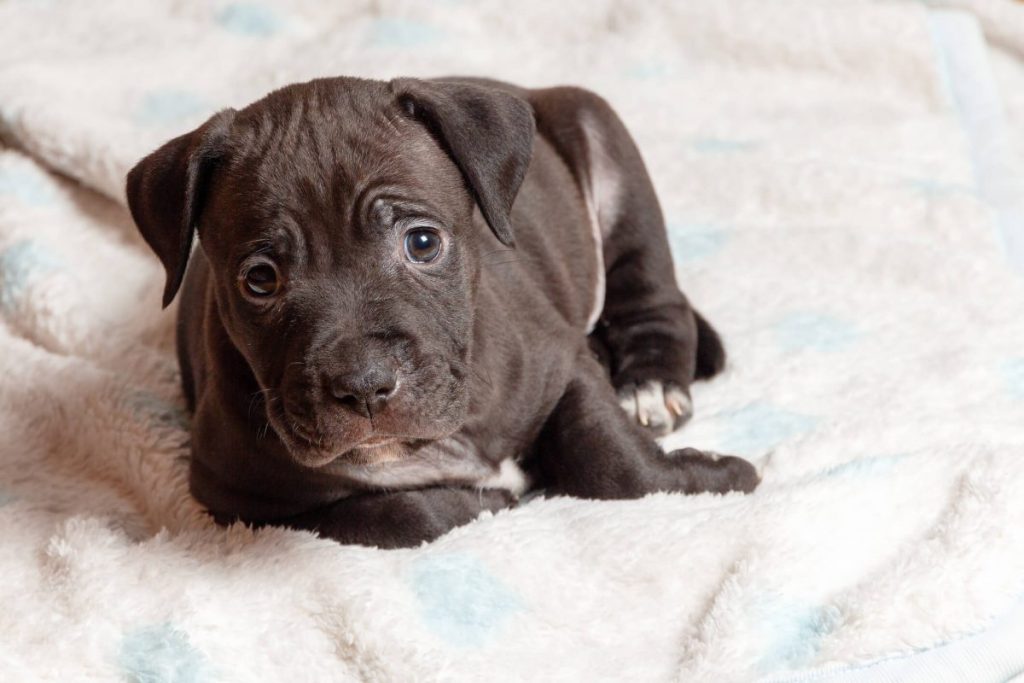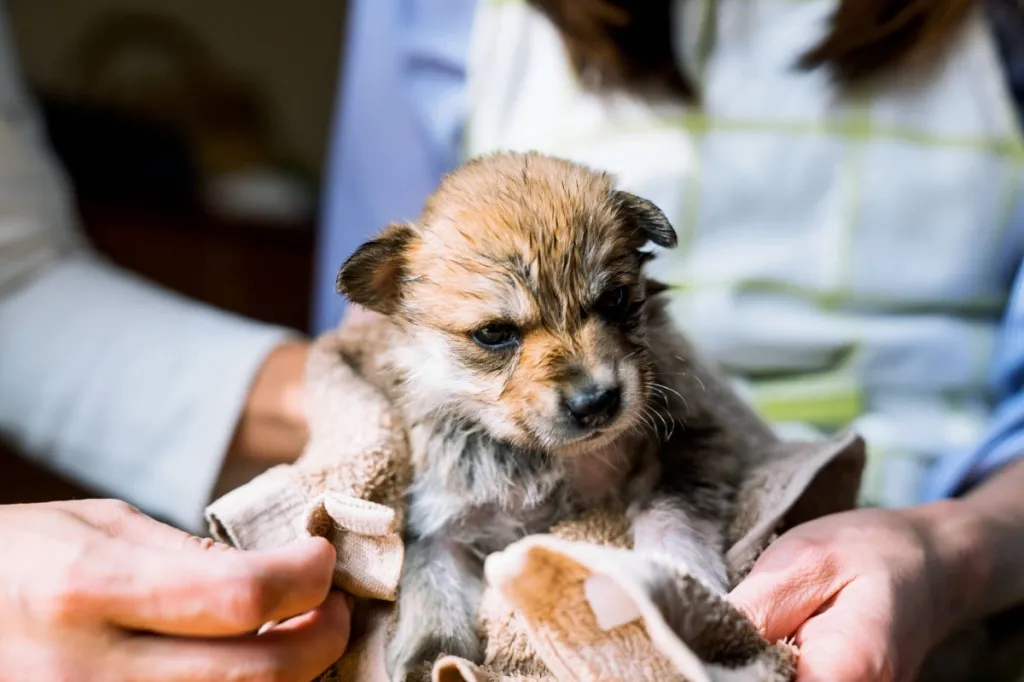Puppy Impetigo in Dogs: Symptoms, Causes, & Treatments

Puppy impetigo — also known as puppy pyoderma or juvenile pustular dermatitis — is a common bacterial skin infection in young dogs. It manifests as small, pus-filled blisters that can burst and crust over, leaving behind red, irritated skin. The condition typically affects puppies under one year old, especially those between three and six months of age. Similar to a mild form of impetigo seen in children, it primarily targets the hairless regions of a puppy’s skin, such as the belly, groin, and armpits. However, unlike human impetigo, canine impetigo is not contagious.
Here’s what you should know about the symptoms, causes, and treatments of the condition.
Symptoms of puppy impetigo in dogs

Puppy impetigo presents with a variety of symptoms that are relatively easy to spot. The most common signs include:
- Small, red bumps
- Pustules
- Itching and discomfort
- Crusty or scaly skin
- Hair loss
- Unusual odor
- Behavioral changes (in rare instances)
If you suspect your puppy has impetigo, it’s important to take them to a veterinarian for a definitive diagnosis. Your veterinarian will perform a thorough physical examination and may take a skin scraping or swab to analyze under a microscope. This helps to confirm the presence of bacterial infection and rule out other possible conditions, such as mange or fungal infections. In some cases, your vet might recommend a culture and sensitivity test to identify the specific bacterial strain and determine the most effective antibiotic treatment. Although impetigo often resolves on its own, prompt and accurate diagnosis ensures your puppy receives the right treatment to speed up recovery and prevent complications.
Causes of puppy impetigo in dogs

The main cause of puppy impetigo in dogs is bacterial infection, most commonly from Staphylococcus pseudintermedius or Staphylococcus aureus. These bacteria are naturally present on the skin and mucous membranes of healthy dogs but can lead to infections when they breach the skin barrier, often through cuts, scrapes, or other disruptions. Puppies are particularly vulnerable to this condition because their immune systems are still maturing and are not as effective at fighting off infections as those of adult dogs.
Several factors can predispose puppies to impetigo. Poor hygiene and inadequate grooming can facilitate bacterial growth on the skin. Additionally, stress and nutritional deficiencies can weaken a puppy’s immune system, making it easier for infections to take hold. Puppies with underlying health issues, such as parasites or allergies, are also at higher risk as these conditions can compromise skin integrity and immune defenses.
Treatments for puppy impetigo in dogs
While puppy impetigo may seem alarming, it is generally considered a benign and treatable condition. Here are some treatment options you can expect your veterinarian to recommend:
- Topical antibiotics: Mild cases of impetigo can often be managed with topical treatments. You can apply antibacterial creams and ointments — such as those containing neomycin, mupirocin, or polymyxin — directly to the lesions to combat the infection.
- Medicated shampoos: Medicated shampoos containing antibacterial agents like chlorhexidine or ethyl lactate can help cleanse the skin and reduce bacterial load. Ensure you thoroughly rinse the shampoo off to prevent skin irritation.
- Oral antibiotics: In more severe or persistent cases, oral antibiotics may be necessary. Your veterinarian might prescribe a course of antibiotics like clindamycin, erythromycin, or cephalexin to be administered over six to eight weeks. Make sure to complete the entire course of medication even if symptoms improve early to prevent recurrence and resistance.
In addition to following your vet’s treatment plan, there are several things you can do at home to help your puppy recover:
- Regular cleaning: Clean the affected areas gently with warm water and mild antiseptic solutions as recommended by your vet.
- Avoid irritants: Keep your puppy away from potential irritants like harsh chemicals or rough surfaces.
- Prevent scratching: Use an e-collar if necessary to prevent your puppy from scratching or licking the lesions, which can worsen the infection.
- Healthy diet: A well-balanced diet can boost your puppy’s immune system, helping them fight off infections more effectively.
Most cases of puppy impetigo in dogs are mild and respond well to treatment. However, if the condition doesn’t improve with initial treatment, spreads rapidly, or if your puppy shows signs of severe discomfort, consult your vet immediately. Persistent or recurring impetigo might indicate underlying health issues that need to be addressed.







